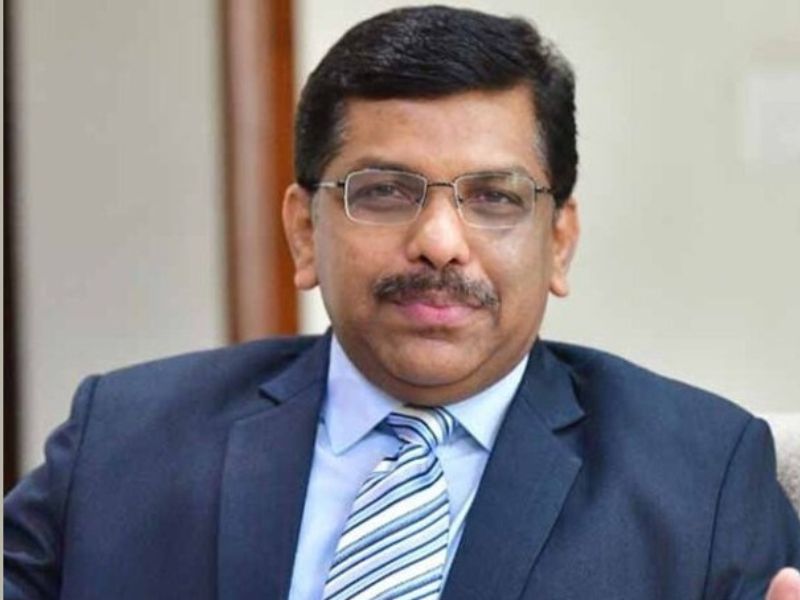On May 2, Times Higher Education (THE) – the global rankings organisation – and Sonipat, Haryana based O.P. Jindal Global University (JGU) hosted a day-long conference on ‘Developing World-class Universities in India: Role of Data Benchmarking’ in New Delhi. Eminent academics deliberated on the importance and impact of benchmarking and global rankings of higher educational institutions and universities in India.
Expressing grave concern over the state of higher education in the country, experts suggested the need for urgent academic reforms, quality benchmarking systems and pursuit of international rankings. It was recognised that a “mirror” should be held to the education system in the form of rankings which must be “objective” and the higher educational institutions must look at the reality by looking at rankings regularly.
Referring to serious challenges such as availability of adequate resources, qualified faculty and a eco system in the form of favourable policy environment and strong academic leadership, it was emphasised that these issues must be addressed in the quest of Indian universities to enter international rankings.
In his inaugural address, Professor (Dr) Deepak Nayyar, emeritus professor of Economics, Jawaharlal Nehru University and former vice-chancellor, University of Delhi, highlighted systemic flaws which stifled excellence in higher education. Calling for innovative structures of governance, he emphasised the appointment of competent persons as vice chancellors who have the courage to stand up. Quoting a former Chief Justice of India, Justice J.S. Verma, he said, “A good vice chancellor is one who does not have a past and who does not want a future”.
In his welcome address, Prof. (Dr) C Raj Kumar, founding vice chancellor, O.P.Jindal Global University (JGU) underscored the need to strengthen internal mechanisms in Indian universities for improving quality. “Posterity will not forgive us if we do not strengthen current internal mechanisms, which is expected of us by the society at large”. Dr. Raj Kumar pointed out that this year, seven Chinese universities have made it to the list of top 200 Universities in the world by focussing on research and attracting massive funding and they also contributed to increase of GDP and thereby to nation-building. India has an opportunity and the current reforms relating to autonomy and the institutions of eminence, if pursued in the right spirit has the potential to help Indian build world class universities in the future.
Prof. (Dr) Sushma Yadav, member, University Grants Commission, professor, Indian Institute of Public Administration, said India is progressing towards developing world-class universities and intends to create and nurture 20 public and private world-class universities, which will consciously improve their position in the global higher educational rankings. “Despite a competitive world, we don’t wish to join the rankings bandwagon before adequately addressing the demands of our populace. Emerging economies like ours need educational reforms and resolving of issues at the fundamental level. Data plays a pivotal role in accomplishing this. We need to interpret data for public good and be mindful of basic issues affecting the nation,” she said.
Trevor Barratt, CEO, Times Higher Education (THE) opined that global benchmarking powers reputation, strengthens research and derives quality. Multiple factors and processes such as performance data from universities as well as reputation and bibliometric data from academics are assessed before compiling the world university rankings. More than 1,457 institutions have submitted their data, while 3,513 universities have voted for it and 63 million citations analysed for 2018. Elaborating on the rise of China with many of its higher educational institutions entering the global rankings, he emphasised that Indian institutions need to evolve. “China has increased its funding for education 360 times in 31 years and now stands at £3.2 billion. While China will have 37.4 million enrolments of students by 2020 – in the 18-22 age group – India will have 27.8 million students,” Barratt stated.
Phil Baty, editorial director, Times Higher Education, mentioned that institutions wishing to succeed via benchmarking and rankings should have a robust proportion of foreign or foreign-qualified faculty, a reasonably healthy mix of domestic and foreign students, and a faculty-to-student ratio not less than 1:20. He highlighted the importance of a good teacher-student ratio of 1:10. “Educational institutions should engage in applied research and innovation through strong financial support. They should pursue research collaborations and promote a culture encouraging faculty members to publish regularly,” noted Baty. He also presented the trajectory underlining India’s growth in rankings from a global standpoint.
Terming rankings and benchmarking as “a role model here to stay”, Francisco Marmolejo, global lead of tertiary education at the World Bank stated that improving the quality of higher education institutions is a global responsibility and it is necessary to explore new ways of working together.
He declared that government policies may have unrealistic ambitions, often fuelled by political motives and so assumptions could be drawn that world-class universities can be created by decree.
Dr Jagdish Arora, director, INFLIBNET, Gandhinagar, discussed the National Institutional Ranking Framework (NIRF). The NIRF outlines a methodology in ranking institutions in India. Speaking at the session, ‘Global Data Benchmarking and India’s National Ambitions’, he said the methodology draws from the overall recommendations of a core committee set up by the Ministry of HRD, Government of India, identifying the broad parameters for ranking various universities and institutions. The parameters broadly cover teaching, learning and resources, research and professional practices, graduation outcomes, outreach and inclusivity and perception.
Prof. (Dr) N V Varghese, vice chancellor, National Institute of Educational Planning and Administration, (NIEPA), New Delhi, claimed that rankings have acquired a level of obsession among institutions. While this practice has succeeded in some countries, in many others it hasn’t. Speaking at the session, ‘India’s Imagination of World-class Universities’, Prof. Varghese noted, “China is an example of adopting a fast-track model in gaining rankings for its higher educational institutions and India is adopting a similar approach. We need to work on student-teacher ratio, which is lopsided across most Indian universities, except for a few private ones that promise a decent ratio.”
Prof. (Dr) Sunaina Singh, vice chancellor, Nalanda University, Rajgir (Bihar), stressed that before a student is enrolled in a higher educational institution, s/he should be exposed to exemplary school education, which remains a daunting challenge for India.
In concluding remarks, Prof. (Dr) Y S R Murthy, registrar, JGU and senior fellow, IIHEd underlined the need to create quality consciousness in the higher educational institutions. He also welcomed many important suggestions that emerged at the conference which include, among others, metrics like student employability, social outreach, diversity of revenue sources and university social responsibilities and discipline that educational institutions need to meet in making a mark globally.
Prof. (Dr) P Prakash, vice chancellor, SRM University, Delhi-NCR, Sonipat, Prof. (Dr) Ranbir Singh, vice chancellor, National Law University, Delhi and Kavit Yagnik, research solutions manager, South East Asia and ANZ, Elsevier/Scopus were among many experts who addressed the conference. A ‘Master-class on rankings methodology was conducted by Times Higher Education’ led by Baty. Dr. Furqan Qamar, secretary general, Association of Indian Universities (AIU) also addressed the gathering.
THE’s mission is to help create the conditions and ambience to fuel the success of universities by providing them with data and insights from the world’s top universities. For five decades, THE has been a leading provider of data, insights and intelligence on higher education. In India, THE has ranked 42 higher educational institutions and universities.
Posted in Corporate























